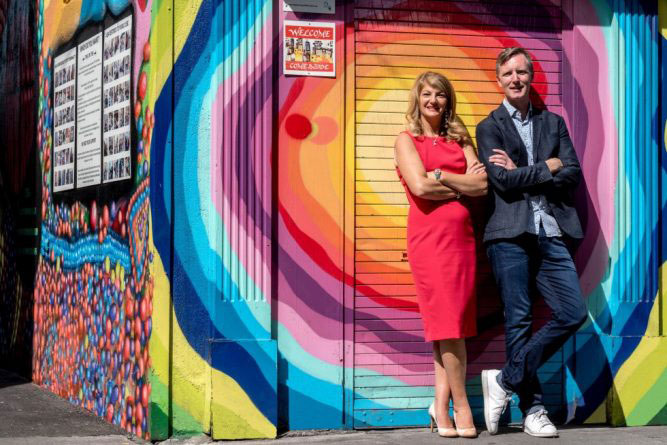
Staff acquisition and retention, in-housing, reduced marketing budgets, the rising costs associated with pitching and Brexit are amongst some of the key challenges facing Irish creative and media agencies according to IAPI’s Census report for 2019.
Published this week, the IAPI Census 2019 provides a detailed analysis of Ireland’s creative and media industry direction, trends and challenges and this year’s publication is the seventh edition.
According to the report, one of the biggest bones of contention within the industry is the cost of pitching. On average agencies spend 53 days working on a pitch while they also manage around 11 tenders during the year. The overall investment in pitching per member, over a year, weighed in at an average of €250,000. This figure includes €50,000 worth of third-party costs incurred by media agencies per pitch and €40,000 for creative agencies. These third-party costs are made up of freelance support to help with additional resourcing and planning; cost of research; and the cost of production and design which are a major investment by competing agencies to win new business. The report notes that clients asking for extensive pitch processes are also the very clients demanding the very best strategic and creative talent from their agencies, but the scale of work required for a pitch process limits agencies’ ability to invest in innovation and key talent development.
In addition, the Census report dwells on the staffing crisis that has beset the industry. While it points out that staff hiring was up by 42% on 2017 – the industry employs close to 2,000 staff- a 17% increase in staff attrition remains a concern
During 2018 the average number of staff working in creative sector agencies grew by 20% with 42% reporting hiring during the year. Of particular note was the trend of new hires being sourced from outside the industry reflecting the greater multi-disciplinary nature of creative solutions required, especially in an increasingly data-driven and digital market.
Increasingly, creative and media agencies are competing with FAANGs (Facebook, Amazon, Apple, Netflix, Google) to attract the best digital talent, especially in UX/UI, motion graphics and SEO skills. This poses challenges for Irish creative agencies, which are mainly indigenous Irish businesses, which must compete with multi-national FAANGs offering remuneration packages up to 40% higher than what can be borne by creative and media agencies.
In a review of the skills needed in the sector, IAPI Census 2019 found that strategic planning continues to be the single biggest talent gap in the industry with a trend of experienced planners leaving the sector during 2018. This trend has led to agencies looking overseas to both resource and boost their strategic capabilities.
The Census report also notes that the profitability of both media and creative agencies has improved with the average operating profit margin for smaller agencies weighing in at 9% while for larger agencies the margin was in the region of 12.1%, rising to around 16% plus for 20% of the agencies surveyed. While the amount of turnover generated by international business declined from 17% in 2017 to 15% last year, there was an improvement in the amount of income agencies derived from retainers. According to the report, creative agencies derived 30% of their income from retainers in 2018, up from 28%. For media agencies, however, the increase was more substantial, rising from 50% in 2017 to 60% in 2018.
According to Charley Stoney, CEO of IAPI: “As an industry we have been asked to completely rethink and transform how we do business as there is potential competition from in-house teams, the big tech firms or FAANGs and also across the whole gambit of the commercial creativity business as agencies embrace all the disciplines in this new world. I believe we are responding well, particularly in Ireland where we’ve always had to turn on a sixpence to survive.
“My concern is that some of our client partners are not transforming at the same speed and yet are the very organisations demanding new ways of working from their agencies. The pitch process is a perfect example of a process that was devised decades ago at a time when client companies chose their agencies on their creative output on a particular day. Now that marketing has become increasingly complex and broader, agencies are involved in strategic business planning, customer experience, customer insight and research as well as the creative outputs and media planning required for marketing communications. A tender which is designed for a client to really get to know their potential agency partner is much more likely to have a successful outcome and it is time the industry embrace the more innovative, less onerous and costly tender processes that the enlightened few have started to use.”
She adds: “While the IAPI Census 2019 highlights some positive developments in a sector that contributes more than €1 billion euro to the economy, there are growing concerns about client-driven demands that are unsustainable especially as the economy heads into a period of greater uncertainty. Our industry professionals are relied upon to create and execute campaigns which positively impact business outcomes, yet there is increasing data to show that more is being asked while budgets, especially for strategic thinking and quality creativity are being cut. The perfect storm of increased pitching cost, greater client demands and a reduction in overall campaign costs is leading to agencies being unable to compete with tech company remuneration packages when they come looking for their best staff. In IAPI we are very focused on providing quality, yet affordable training and development for the industry as it’s vitally important that agency talent are still able to provide the most creative, innovative and value-added solutions for clients in the future.”




















